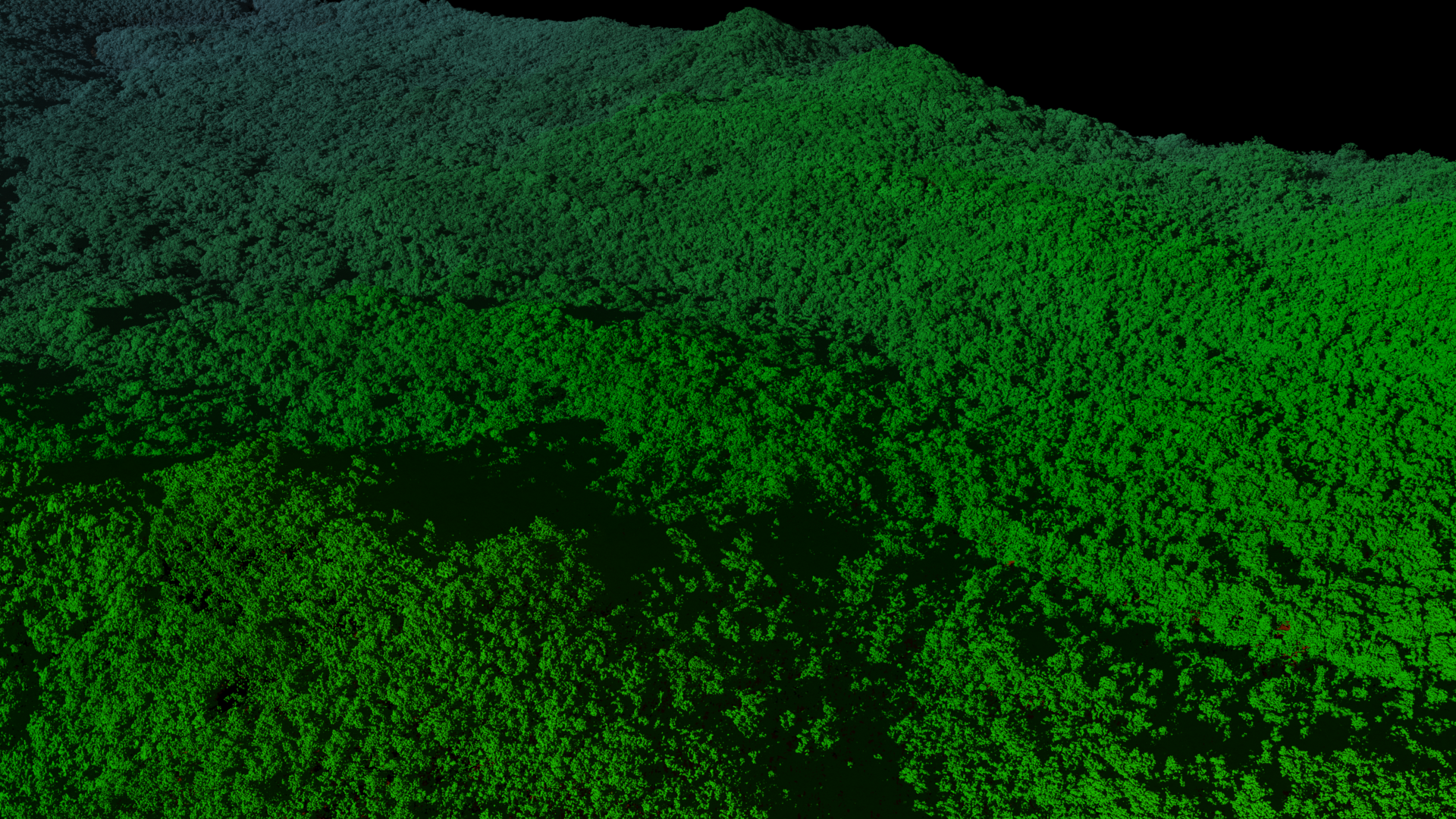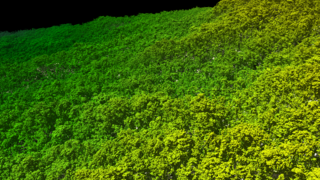El Yunque National Forest, Puerto Rico Canopy Change Nadir View (2017-2018)
Animation that does of a low fly over of El Yunque National Forest, Puerto Rico. The entire animation is split screen showing the 2017 data on top and 2018 on bottom. Notice the dense lush forest canopy in 2017 and how it covers and shades much of the forest floor. However, in 2018, after Maria devastated the forest in late 2017, the tree canopy has been greatly thinned exposing much more of the forest floor.
In September 2017, Hurricane Maria's lashing rain and winds also transformed Puerto Rico's lush tropical rainforest landscape. Research scientist Doug Morton of Goddard was part of the team of NASA researchers who had surveyed Puerto Rico's forests six months before the storm. The team used Goddard’s Lidar, Hyperspectral, and Thermal (G-LiHT) Airborne Imager, a system designed to study the structure and species composition of forests. Shooting 600,000 laser pulses per second, G-LiHT produces a 3D view of the forest structure in high resolution, showing individual trees in high detail from the ground to treetop. In April 2018 (post-Maria) the team went back and surveyed the same tracks as in 2017 (before Maria).
The extensive damage to Puerto Rico's forests had far-reaching effects, Morton said. Fallen trees that no longer stabilize soil on slopes with their roots as well as downed branches can contribute to landslides and debris flows, increased erosion, and poor water quality in streams and rivers where sediments build up.
2017 El Yunque National Forest, Puerto Rico. Notice the dense forest coverage before Hurricane Maria struck six months later.
2018 El Yunque National Forest, Puerto Rico. Notice the exposed forest floor after Hurricane Maria hit in late 2017.
Credits
Please give credit for this item to:
NASA's Scientific Visualization Studio
-
Data visualizers
- Alex Kekesi (Global Science and Technology, Inc.)
- Greg Shirah (NASA/GSFC)
- Horace Mitchell (NASA/GSFC)
- Cindy Starr (Global Science and Technology, Inc.)
-
Producer
- Matthew R. Radcliff (USRA)
-
Writer
- Ellen T. Gray (ADNET Systems, Inc.)
-
Scientist
- Doug C. Morton (NASA/GSFC)
-
Data provider
- Hyeungu Choi (Global Science and Technology, Inc.)
-
Technical support
- Laurence Schuler (ADNET Systems, Inc.)
- Ian Jones (ADNET Systems, Inc.)
Release date
This page was originally published on Monday, December 10, 2018.
This page was last updated on Wednesday, November 15, 2023 at 12:11 AM EST.
Series
This visualization can be found in the following series:Datasets used in this visualization
-
LiDAR (LiDAR 3D point cloud) [Airplane: G-LiHT]
ID: 965
Note: While we identify the data sets used in these visualizations, we do not store any further details, nor the data sets themselves on our site.



![Music: After the Sun by Andrew Michael Britton [PRS], David Stephen Goldsmith [PRS], Andrew Skeet [PRS]Complete transcript available.](/vis/a010000/a013100/a013188/Still_print.jpg)
![To get a detailed look at vegetation and land cover, NASA uses an airborne instrument called Goddard’s Lidar, Hyperspectral and Thermal Airborne Imager, or G-LiHT. From the belly of a small aircraft flying one thousand feet above the trees, G-LiHT collects multiple measurements of forests, including high-resolution photographs, surface temperatures and the heights and structure of the vegetation. Watch this video on the NASA Goddard YouTube channel.Complete transcript available.Music: Letting the Past Go, by Ben Hales [PRS], Matt Hales [PRS]](/vis/a010000/a012500/a012590/12590_Puerto_Rico_lidar_youtube_1080.00248_print.jpg)